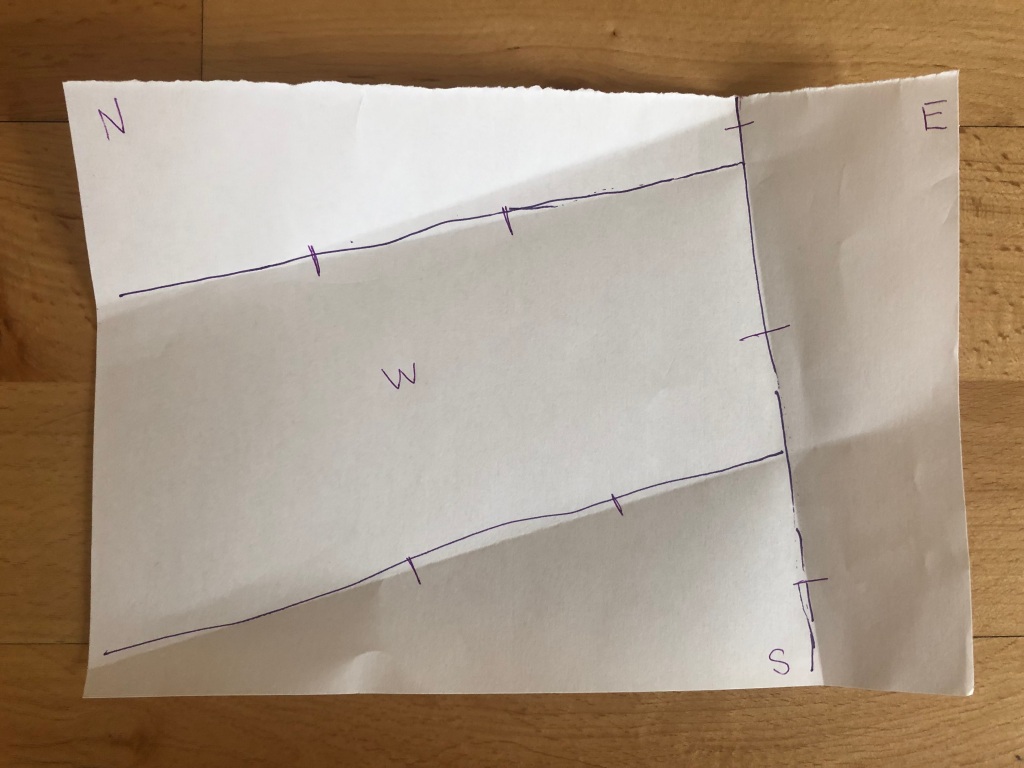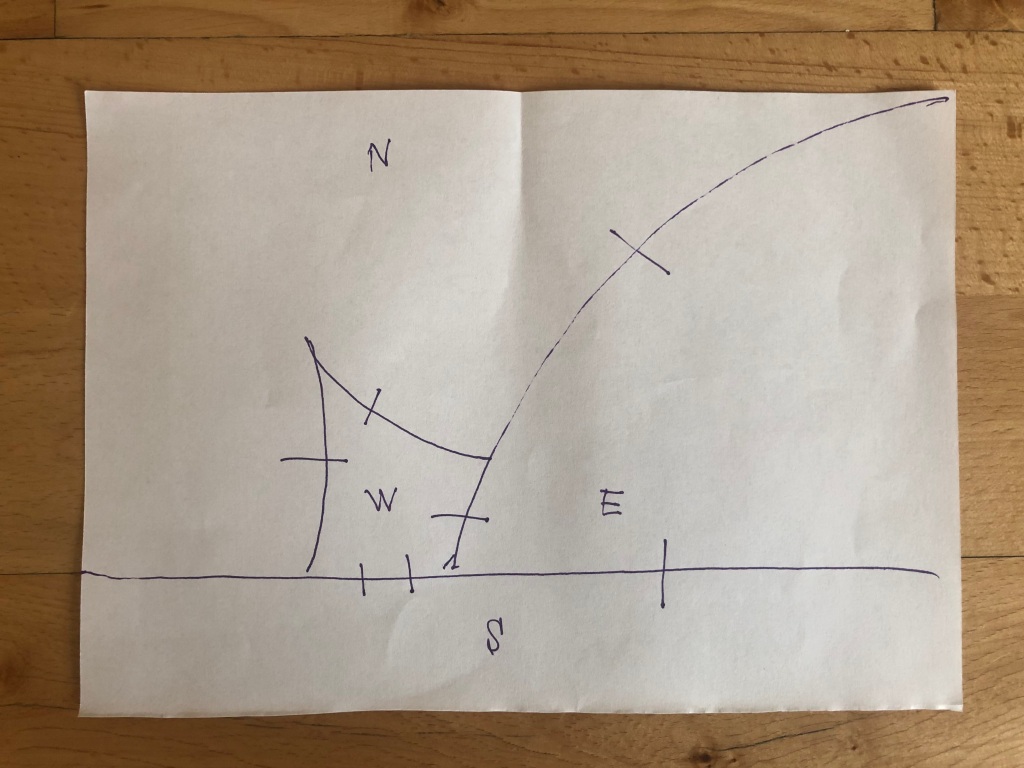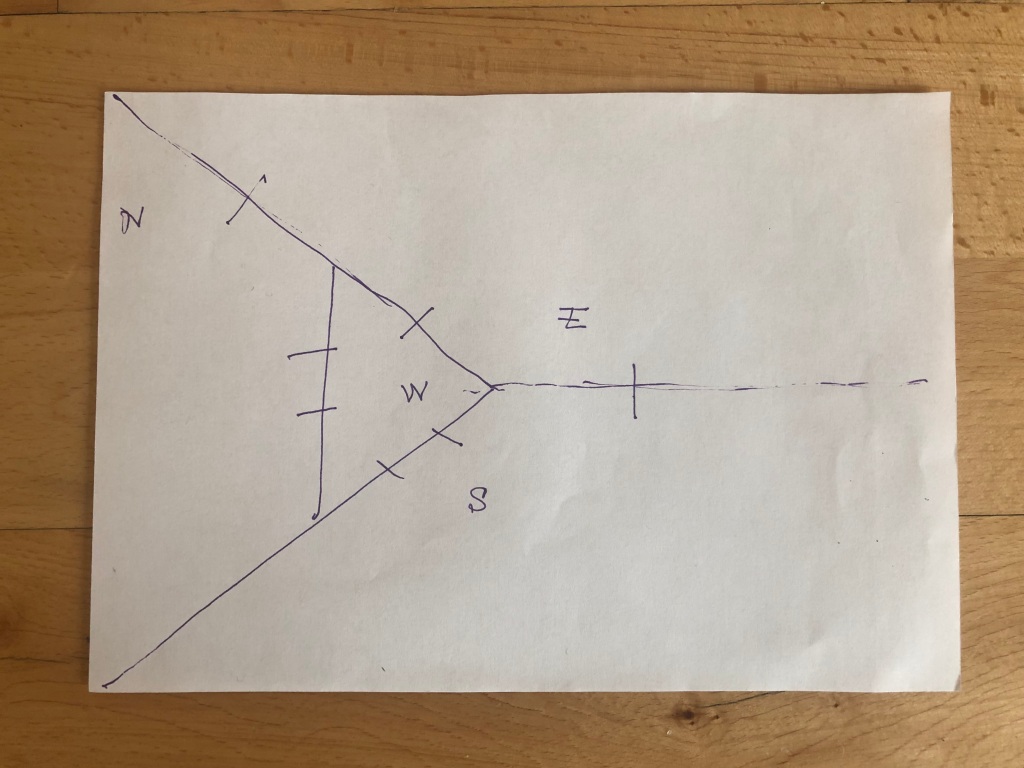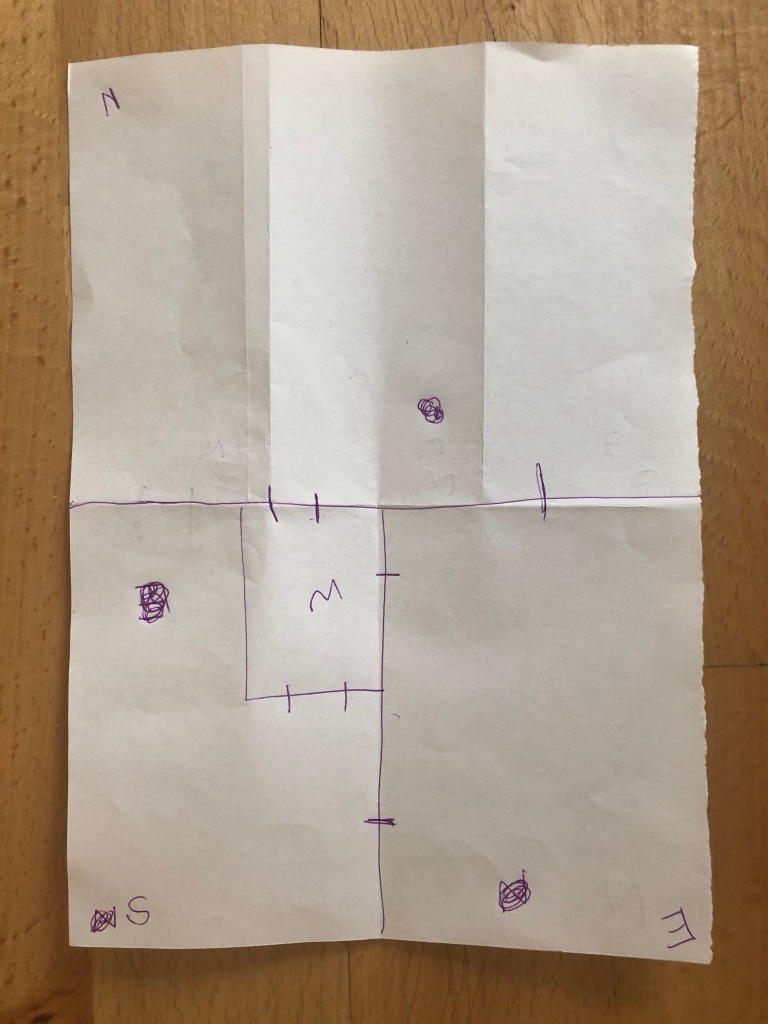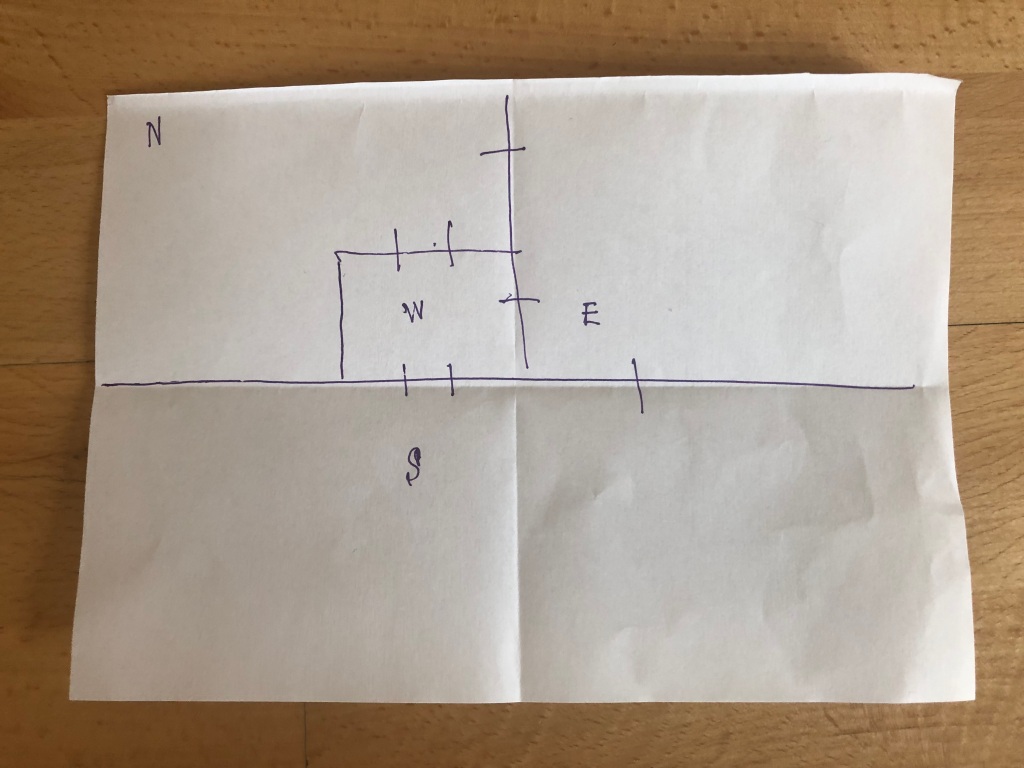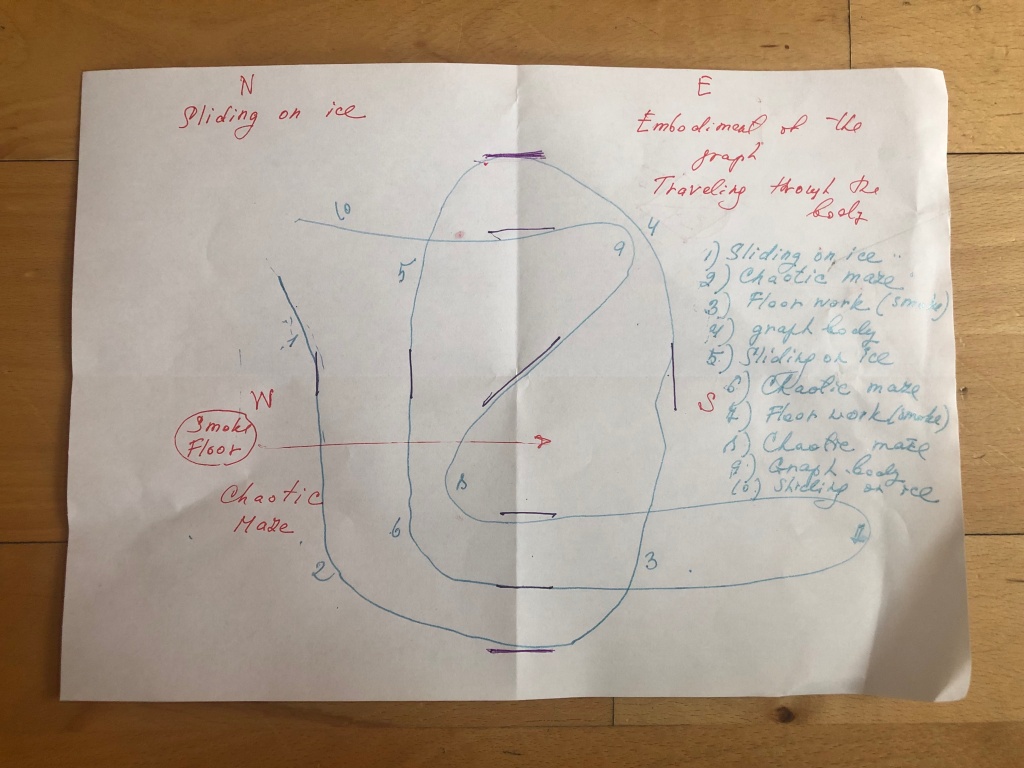I was greatly inspired by facilitating my B>Lab at the BIDE B>Meeting in Barcelona this June. The B>Lab was a group exploration of my movement practices created for the joint workshop paper “Puppetry, Poetry, Dance, and Sound on the Bridges of Königsberg: Embodied Work with Euler Paths and Circuits” co-written with Susan Gerofsky, S. Brackett Robertson, and Karl Schaffer.
In the spring, together with Shanti Pise, dancer, choreographer, and educator, we started working on our collaborative duo dance piece. As the next stage of working on the duo and in continuation of experimenting with my practices outlined in the paper, Shanti and I met for our duo movement research practice twice in July.
In the Bridges of Königsberg mathematical puzzle, there are seven bridges, and it is impossible to walk about Königsberg, ending where you began and crossing each of its seven bridges exactly once. It was proved by Euler in 1735, and such a walk is called Eulerian circuit. To make an Eulerian circuit, we need to either build new or destroy existing bridges.
14 July 2023 Siobhan Davies Studios “Townsquare” 13:00-15:30
During our first session, each of us added two bridges (in different places) and created her own Eulerian circuit. Accordingly, we ended with nine transitions (since we added two bridges) between four initial areas [N, E, W, S]; hence, each of us visited twice two areas [N and S for Shanti, E and S for Eka], and three times – other two areas [E and W for Shanti, N and W for Eka]). We concurrently danced in the same area (W – chaotic maze) twice: on the 6th and 8th stages of our circuits. We agreed that Shanti starts and ends in E area, Eka in N.
Shanti proposed to optimise the spacing:
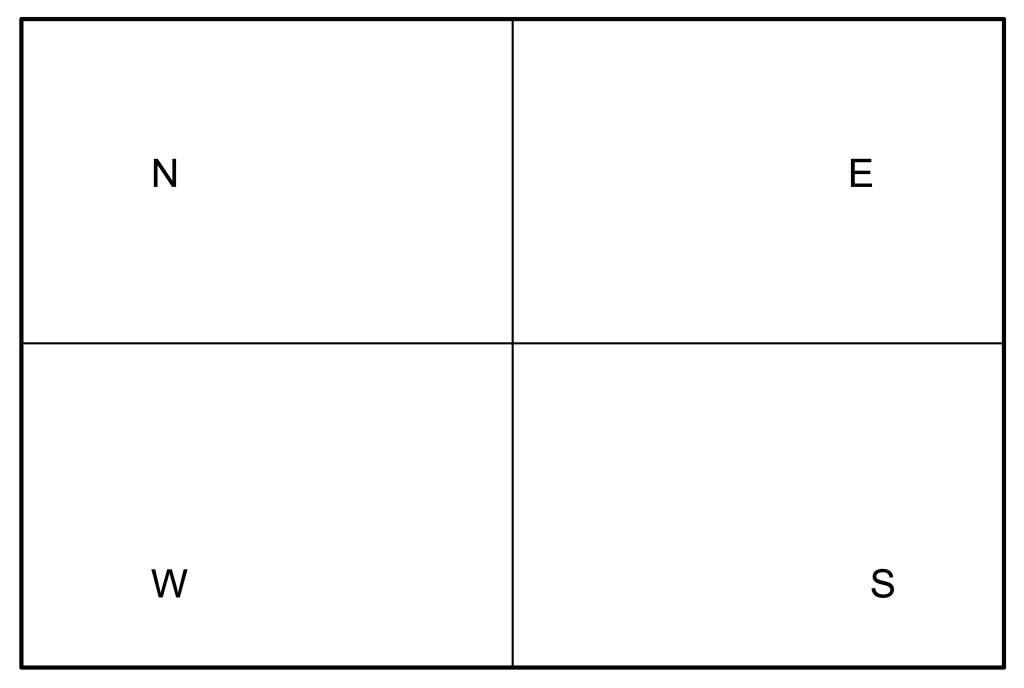
Shanti’s Eulerian circuit:
Eka’s Eulerian circuit:
24 July 2023 Siobhan Davies Studios “Townsquare” 15:00-16:30
During our second session, we experimented with deleting bridges and realised that there are only two Eulerian circuits possible:
Eulerian circuit A (5 transitions between 4 areas – deleted one bridge between N and E and one bridge between W and S)

Eulerian circuit B (5 transitions between 4 areas – deleted one bridge between N and W and one bridge between E and S)
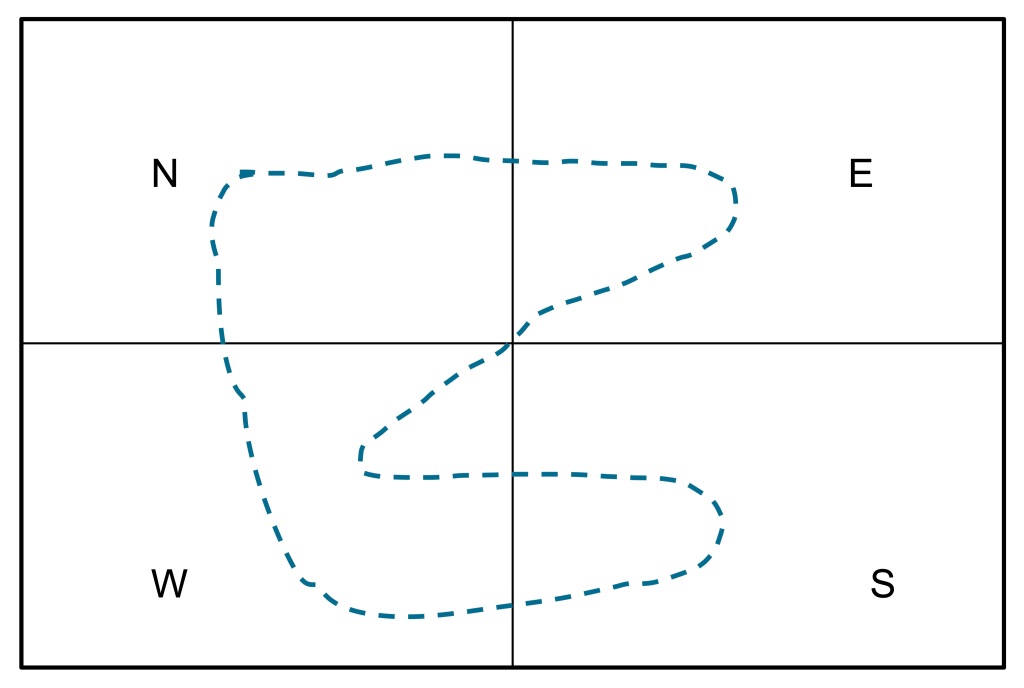
As in the first session, Shanti starts in E, Eka in N, and this time, we agreed to go in opposite directions towards each other: Shanti goes counterclockwise, Eka clockwise. Thus, our versions of Eulerian circuits A and B will be:
AS – starts from E and goes counterclockwise {E, W, N, W, S, E}
AE – starts from N and goes clockwise {N, W, E, S, W, N}
BS – starts from E and goes counterclockwise {E, N, W, S, W, E}
BE – starts from N and goes clockwise {N, E, W, S, W, N}
We tried all possible combinations, wondering when we would meet:
AS AE – we met on second step in W
BS AE – we met on on fifth step in W
AS BE – we did not meet
BS BE – we met on the third, fourth, and fifth steps in W, S, and W accordingly
During that meeting, we also created six new options for our four areas arrangements that can affect the trajectory of movement differently. We can mark them m, n, o, p, q, r and the Eulerian circuits A and B, and their combinations, can be applied over any spacing (m, n, o, p, q, r, and many more, the number of options is endless).
